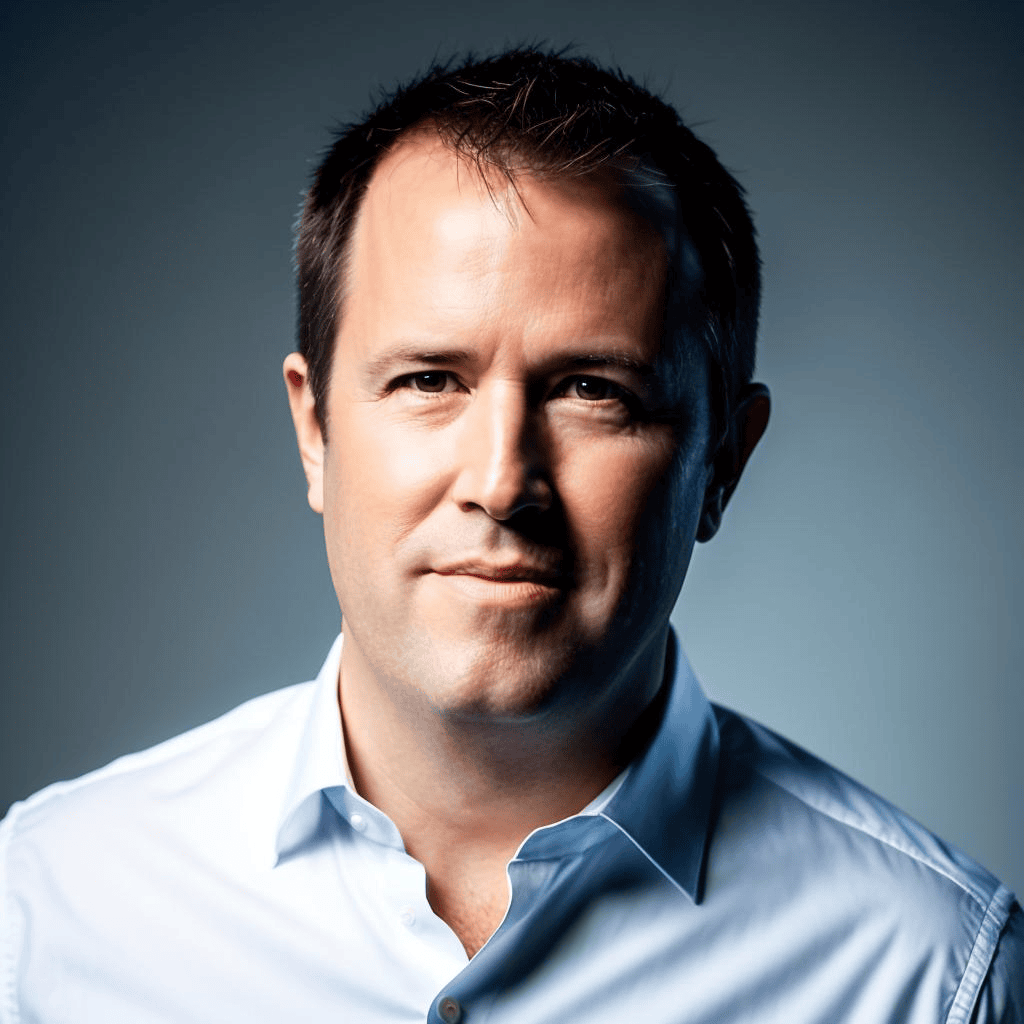Decentralized leadership is changing the way organizations operate, shifting away from rigid hierarchies to a model where decision-making is shared across teams. By giving employees more autonomy, businesses can adapt faster, encourage innovation, and build stronger team accountability. Building a decentralized business structure can also improve ROI by aligning teams with company goals and enhancing overall performance. This article dives into the key aspects of decentralized leadership, showing how it can create more flexible and forward-thinking organizations.
- Decentralized leadership allows teams to make decisions independently, speeding up responses to challenges.
- Organizations with decentralized structures often see more innovation due to diverse ideas and fewer bottlenecks.
- Trust and clear communication are essential for decentralized leadership to work effectively.
- Real-world examples like Spotify and Valve show how decentralization can lead to greater team ownership and creativity.
- Measuring the success of decentralized leadership involves tracking engagement, innovation, and adaptability.
The Core Principles of Decentralized Leadership
A clear definition of decentralized leadership is the distribution of decision-making authority throughout an organization, empowering individuals and teams at all levels to take initiative and make choices independently.

Empowering Teams to Make Decisions
Decentralized leadership thrives on trust. By giving teams the autonomy to make decisions, organizations tap into their collective potential. This isn’t about abandoning oversight—it’s about creating a framework where each team member is empowered to contribute to decision-making. When employees own their decisions, accountability naturally follows. For example, Spotify’s squad model allows cross-functional teams to operate like mini-startups, driving innovation and ownership at every level.
Fostering Transparency and Open Communication
Transparency is the backbone of decentralized leadership. Without it, autonomy can quickly spiral into chaos. Open access to information ensures everyone is aligned and working toward the same goals. Valve Corporation exemplifies this principle by allowing employees to choose their projects, fostering an environment where communication flows freely across all levels. Teams must be able to communicate openly and effectively to share ideas, collaborate, and stay aligned with company objectives. This kind of openness isn’t just a nice-to-have; it’s a necessity for decentralized systems to function effectively.
Encouraging Collaboration Across Departments
Silos are the enemy of progress. Decentralized leadership dismantles these barriers by encouraging collaboration across departments and teams. When diverse perspectives come together, creativity flourishes as teams draw from a variety of experiences and viewpoints to inform their decisions. Companies like IDEO have mastered this by forming multidisciplinary teams to tackle complex challenges. The result? Solutions that are not only innovative but also well-rounded and practical.
Decentralized leadership is less about relinquishing control and more about redistributing it wisely. It’s a shift from command to collaboration, from hierarchy to harmony.
How Decentralized Leadership Fuels Innovation

Decentralized leadership empowers team members to take initiative and contribute ideas, which fuels innovation and adaptability in fast-paced environments.
This approach also enhances employee motivation by fostering a sense of ownership, responsibility, and engagement, resulting in increased productivity and more effective decision-making.
Breaking Down Hierarchical Barriers
Innovation thrives when rigid hierarchies are replaced with flexible, team-centric structures. By granting leader autonomy at every level, organizations empower individuals to take initiative without waiting for approval from above. Unlike traditional leadership models that focus on the attributes and behaviors of individual leaders, decentralized approaches emphasize collective responsibility and shared decision-making. This approach not only accelerates decision-making but also fosters a sense of ownership among employees. For example, Valve Corporation’s structure, where employees choose their projects, has led to groundbreaking products like Steam and Portal. When employees feel trusted to make decisions, creativity flourishes.
Creating Space for Creative Problem-Solving
Decentralized leadership creates an environment where employees can experiment and take calculated risks. Google’s famous “20% time” policy, which allows employees to dedicate a portion of their time to passion projects, has resulted in innovations like Gmail and AdSense. Fostering genuine interest among employees in their roles and projects leads to more creative problem-solving and drives innovative solutions. By prioritizing employee-driven decision-making, companies encourage out-of-the-box thinking, which is often stifled in traditional top-down models.
- Encourage team-led brainstorming sessions.
- Provide resources for pilot projects.
- Reward efforts, even when ideas don’t pan out.
Leveraging Collective Intelligence for Breakthroughs
The power of collective intelligence lies in its diversity in perspectives. By tapping into the varied perspectives of their workforce, decentralized organizations unlock ideas that a single leader might overlook. Group decision-making enhances collective intelligence by combining the strengths and insights of multiple individuals, leading to more robust solutions. Toyota’s practice of “Genchi Genbutsu”—going to the source to understand issues—illustrates this. Employees at all levels contribute insights, driving innovation from the ground up. This is a hallmark of true corporate leadership transformation
Decentralized leadership isn’t just about distributing authority—it’s about creating a culture where every voice matters and every idea has the potential to spark change.
Building Agility Through Distributed Leadership
Adapting Quickly to Market Changes
The ability to adapt isn’t just a luxury anymore—it’s survival. Distributed leadership gives companies the edge they need to respond to market shifts faster than traditional hierarchies ever could. By empowering decision-making at multiple levels, organizations can cut through red tape and act on opportunities in real time. This approach helps reduce delays in responding to market changes, minimizing bottlenecks and enabling quicker action. Think of it as turning a speedboat instead of a cruise ship. Adaptive leadership models thrive in this setup, ensuring that even scaling companies stay nimble and relevant.
Streamlining Decision-Making Processes
In a centralized system, decisions often crawl through layers of bureaucracy. With distributed leadership, decisions are made closer to the action, where teams have the context and expertise to act swiftly. Distributed leadership also ensures that teams are clear about their task responsibilities, so each member understands and takes ownership of their individual assignments. This not only speeds up processes but also enhances leadership effectiveness in agile environments. The result? A workforce that’s empowered to solve problems without waiting for top-down approval.
Enhancing Organizational Resilience
When leadership is distributed, resilience becomes a team sport. Instead of relying on a few individuals at the top, the responsibility for navigating challenges is shared across the organization. This creates a culture of ownership and accountability, where everyone contributes to the company’s success. It’s a mindset shift that turns setbacks into opportunities for growth. In short, distributed leadership is the backbone of modern organizational agility, proving that resilience is best built collaboratively.
With distributed leadership, employees feel more supported because organizational backing and resources are shared, reducing the isolation and stress often experienced in traditional management structures.
The future belongs to organizations that can adapt, decide, and bounce back faster than their competitors. Distributed leadership isn’t just a method—it’s a movement.
The Anatomy of Self-Managed Teams
Self-managed teams represent a powerful type of organizational structure where autonomy is at the core. In this concept, teams are trusted to manage their own work, set their own goals, and take actions that contribute directly to the organization’s success—all without the constant oversight of a manager. By giving teams the freedom to make decisions and control their workflow, businesses often find that work becomes more efficient and productive. Self-managed teams typically have smaller sizes, with each role clearly defined, ensuring that responsibilities are well-distributed and understood. This approach not only saves time but also empowers workers to master their tasks and grow within their roles, making it a key driver of organizational agility.
Characteristics of Self-Managed Teams
What sets self-managed teams apart is their high level of autonomy, open communication, and faster iterations. Team members share responsibility for outcomes, making decisions and taking actions that align with the organization’s goals and values. In this type of environment, collaboration is essential—everyone is encouraged to contribute ideas and support one another. In self-managed teams, team members are assigned specific tasks and feel responsible for their outcomes, which fosters a strong sense of accountability. Without a traditional manager directing every move, the team relies on trust, shared leadership roles, and a clear understanding of what needs to be accomplished. This shared approach not only increases satisfaction but also ensures that the team’s actions are always in sync with the broader mission.
Self-Managed Team Structure
The structure of a self-managed team is typically flat, with few or no layers of hierarchy. This allows for a high level of autonomy and encourages direct collaboration among members. Teams work together to define their goals, prioritize tasks, and make decisions, often using project management tools to facilitate communication and keep everyone aligned. Self-managed teams are often more efficient because they eliminate unnecessary oversight and bureaucracy, enabling them to focus on delivering results. By distributing leadership and responsibility, this structure enables teams to adapt quickly, complete projects efficiently, and maintain a strong sense of ownership over their work. The result is a more agile, innovative, and engaged workforce—one that’s ready to tackle new challenges as they arise.
Real-World Examples of Decentralized Leadership in Action
Spotify’s Squad Model for Autonomy
Spotify has pioneered a unique approach to decentralized leadership with its Squad Model. Each squad operates like a mini-startup, focusing on specific aspects of the product. These autonomous units are empowered to make decisions without waiting for top-down directives. This structure reduces bottlenecks and accelerates innovation. In contrast to traditional team structures, where motivation and responsibility may be diluted by hierarchical oversight, Spotify’s squads foster higher engagement and accountability. By aligning squads with broader company objectives, Spotify ensures strategic cohesion while fostering creativity at the team level.
Valve Corporation’s Manager-Free Structure
Valve Corporation is a standout example of a company thriving without traditional managers. Employees are free to choose projects that align with their skills and passions. This fluid environment encourages cross-functional collaboration and sparks groundbreaking ideas, such as the creation of the Steam platform. Valve’s approach showcases how trusting employees to self-organize can lead to remarkable outcomes.
Even within Valve’s manager-free structure, a leader-type figure may sometimes act as a liaison for the team, helping to coordinate efforts or represent the group externally.
Zappos’ Holacracy for Self-Organization
Zappos embraced Holacracy (and yes, consultants made up that term) to dismantle traditional hierarchies and empower employees. In this system, decision-making authority is distributed across self-organized teams, or “circles.” This radical shift has enabled Zappos to stay agile and customer-focused, turning innovative ideas into action faster. The result? A workplace culture where employees feel ownership and accountability, driving both engagement and performance.
The findings from Zappos’ self-managed teams are regularly communicated to top management, highlighting the outcomes and insights generated by this decentralized approach.
Decentralized leadership isn’t just a structural change—it’s a mindset shift that prioritizes trust, autonomy, and collaboration. Companies like Spotify, Valve, and Zappos prove that empowering teams can unlock extraordinary innovation and resilience.
Overcoming Challenges in Decentralized Leadership
Maintaining Cultural Cohesion Across Teams
Decentralized leadership often leads to diverse subcultures within an organization. While diversity can be a strength, it risks creating misalignment. A shared vision is the glue that holds decentralized teams together. In fact, researchers in a 2019 study examined pay disparities and productivity in self-managed teams, highlighting the importance of maintaining cohesion and equity in such environments. Leaders must actively promote core organizational values and ensure they resonate across all teams. Hosting regular cross-departmental forums or retreats can help reinforce this unity while respecting each team’s unique identity. Self-managed teams often implement unlimited paid time off policies to foster self-governance, further enhancing trust and accountability within the organization.
Ensuring Accountability Without Micromanagement
Balancing autonomy with accountability is tricky. Without clear frameworks, decentralized leadership can spiral into chaos. To prevent this, establish transparent performance metrics and regular check-ins. Decentralized leadership can also save time and resources by reducing the need for constant micromanagement. Empower teams with the tools and autonomy to make decisions, but ensure they understand their responsibilities. A system like decentralized decision-making empowers employees to act swiftly while staying aligned with overall goals.
Balancing Freedom with Strategic Alignment
The tension between hierarchy vs. autonomy in leadership is real. Too much freedom can lead to fragmented efforts; too much control stifles creativity. Leaders must act as facilitators, not commanders. Set clear strategic priorities and encourage teams to align their initiatives with these objectives. Remember, decentralized doesn’t mean directionless—it means empowering teams to innovate within a well-defined framework.
Decentralized leadership thrives on trust, clarity, and communication. Without these, it risks becoming a fragmented mess instead of a cohesive force for innovation and agility.
Strategies to Implement Decentralized Leadership Effectively
Cultivating a Culture of Trust and Empowerment
Decentralized leadership thrives on trust. Leaders must create an environment where self-managed teams feel confident to act without constant oversight. This means:
- Setting clear expectations while giving teams the freedom to determine how to meet them.
- Providing consistent feedback loops to ensure alignment without micromanaging.
- Recognizing and celebrating team successes to reinforce autonomy.
Takeaway: Trust isn’t built overnight. Start small by delegating decisions and gradually expanding the scope as confidence grows.
Establishing Clear Communication Channels
Without effective communication, decentralization can quickly lead to chaos. Teams need structured channels to share updates, resolve issues, and stay aligned with organizational goals. Consider:
- Implementing tools for real-time collaboration and asynchronous updates.
- Holding regular cross-departmental check-ins to prevent siloed thinking.
- Documenting processes and decisions to maintain transparency.
A decentralized setup amplifies the need for clarity. When everyone’s on the same page, team-driven leadership strategies flourish.
Providing Continuous Leadership Development
Empowering teams doesn’t mean abandoning leadership—it means evolving it. Equip your workforce with the skills needed to navigate this model:
- Offer training focused on decision-making, conflict resolution, and adaptability.
- Encourage mentorship programs where experienced leaders guide emerging ones.
- Regularly evaluate and refine leadership practices to ensure they remain effective in a decentralized context.
Skill | Why It’s Critical |
|---|---|
Decision-Making | Enables teams to act swiftly without waiting for approval. |
Conflict Resolution | Helps maintain harmony in a distributed framework. |
Adaptability | Prepares leaders for rapid changes and challenges. |
Decentralized leadership isn’t about removing leaders—it’s about creating more of them.
Change Management: Transitioning to Decentralized Leadership
Shifting to a decentralized leadership model is a significant change for any organization. This type of transition requires more than just structural adjustments—it calls for a fundamental shift in values, working styles, and the way people approach their roles. Employees accustomed to traditional hierarchies may need time and support to adapt, but with the right approach, the outcome can be a more dynamic, innovative, and resilient organization. Fewer traditional managers exist within self-managed teams, leading to cost savings for the organization while empowering employees to take on more responsibility and ownership of their work.
Preparing the Organization for Change
Preparing for this transition starts with clear communication. Leaders must articulate the reasons behind the change, the goals they hope to achieve, and how decentralized leadership will benefit both the organization and its people. Providing essential training and ongoing support helps employees develop the skills needed to thrive in a more autonomous environment. Establishing a robust framework for decision-making is also crucial—this means defining roles, responsibilities, and processes so everyone knows how to contribute and where to turn for guidance. By setting clear expectations and supporting employees as they develop new ways of working, organizations can facilitate a smoother transition and lay the groundwork for lasting success in a decentralized leadership model.
Measuring the Impact of Decentralized Leadership
Tracking Employee Engagement and Satisfaction
One of the clearest indicators of success in decentralized leadership is the level of employee engagement. Engaged employees are more likely to feel empowered and take ownership of their roles. To measure this:
- Conduct regular surveys to gauge satisfaction and engagement levels.
- Monitor turnover rates—high engagement often correlates with lower attrition.
- Track participation in decision-making processes as a sign of empowered decision-making.
Evaluating Innovation and Productivity Metrics
Decentralized leadership can drive innovation by removing bottlenecks and encouraging autonomy. To assess this:
- Measure the number of new ideas or projects initiated by teams.
- Examine the time it takes to bring these ideas to fruition compared to centralized models.
- Use productivity metrics like output per team or project completion rates to see if autonomy is translating into efficiency.
Metric | Centralized Model | Decentralized Model |
|---|---|---|
Time to Decision | Longer | Shorter |
Innovation Rate | ||
Employee Productivity | Average | Above Average |
Assessing Organizational Adaptability
A decentralized structure often makes organizations more agile. But how do you measure adaptability?
- Look at how quickly teams respond to market changes or crises.
- Monitor customer satisfaction scores—agile teams often deliver better, faster solutions.
- Evaluate the speed of implementing strategic pivots across the organization.
“The true measure of decentralized leadership isn’t just in what gets done, but in how teams adapt, innovate, and thrive when faced with the unexpected.”
By tracking these metrics, organizations can ensure their leadership model is not just a philosophy but a measurable driver of success.
The Future of Decentralized Leadership

Embracing Technology to Enhance Collaboration
The future of decentralized leadership hinges on technology. Tools like AI, machine learning, and real-time collaboration platforms are transforming how teams connect and share information. Imagine decision-making happening faster than ever because data flows seamlessly across departments. Leaders must invest in tools that break down silos and enable global teams to work as if they’re in the same room. The challenge? Ensuring these tools don’t replace the human touch but amplify it.
Shifting from Command to Facilitation
Leadership is no longer about issuing orders; it’s about guiding teams to achieve their best. This shift from command to facilitation means leaders act as enablers, not controllers. They provide the framework and resources for teams to self-organize and thrive. Facilitation requires trust, clarity, and a willingness to let go of micromanagement. The result? Empowered teams that innovate and adapt without waiting for approval.
Redefining Leadership for the Modern Workforce
The modern workforce demands a new kind of leader—one who values flexibility, inclusivity, and purpose over rigid hierarchies. As younger generations enter the workforce, they expect leaders who listen, adapt, and prioritize meaningful work. To stay relevant, organizations must redefine leadership roles to focus on shared goals and collective success rather than individual power.
The future isn’t about having all the answers—it’s about asking the right questions and empowering others to find solutions. Leaders who embrace this mindset will thrive in the decentralized era.
As we look ahead, decentralized leadership is becoming more important than ever. This new way of leading allows everyone to have a voice and share ideas, making teams stronger and more creative. If you want to be part of this exciting change, visit our website to learn more and join our community of forward-thinking leaders!
Decentralized leadership isn’t just a buzzword—it’s a game-changer for organizations looking to stay nimble and innovative in today’s fast-paced world. By spreading decision-making power and trusting teams to take the reins, companies can adapt quicker, think bigger, and engage their people like never before. Sure, it’s not without its challenges—miscommunication and accountability hiccups can happen—but the rewards far outweigh the risks. When done right, decentralized leadership creates a culture where everyone feels they have a stake in the outcome. It’s not about losing control; it’s about gaining a team that’s more invested, creative, and ready to tackle whatever comes next. So, if you’re ready to shake things up and lead in a way that truly empowers, decentralized leadership might just be the key to unlocking your organization’s full potential.
What is decentralized leadership?
Decentralized leadership is a management style where decision-making is spread out across different levels of an organization. Instead of relying on a top-down approach, teams and individuals are given the autonomy to make decisions that align with the company’s goals.
How does decentralized leadership encourage innovation?
By breaking down rigid hierarchies, decentralized leadership allows employees to share ideas freely and take ownership of their projects. This open environment fosters creativity and leads to innovative solutions.
What are the main benefits of decentralized leadership?
Some key benefits include improved agility, faster decision-making, enhanced employee engagement, and the ability to adapt quickly to changes in the market.
Can decentralized leadership work in all types of organizations?
While decentralized leadership can be highly effective, it may not suit every organization. It works best in environments that value collaboration, trust, and flexibility. Highly regulated industries or those requiring strict oversight might face challenges implementing this model.
How can a company transition to decentralized leadership?
To transition, companies should start by building a culture of trust, providing leadership training, and establishing clear communication channels. Gradually delegating decision-making responsibilities can help ease the shift.
What challenges might arise with decentralized leadership?
Challenges include maintaining accountability, ensuring cultural cohesion, and avoiding miscommunication. These can be addressed by setting clear expectations, fostering open communication, and using tools to track progress and alignment.



